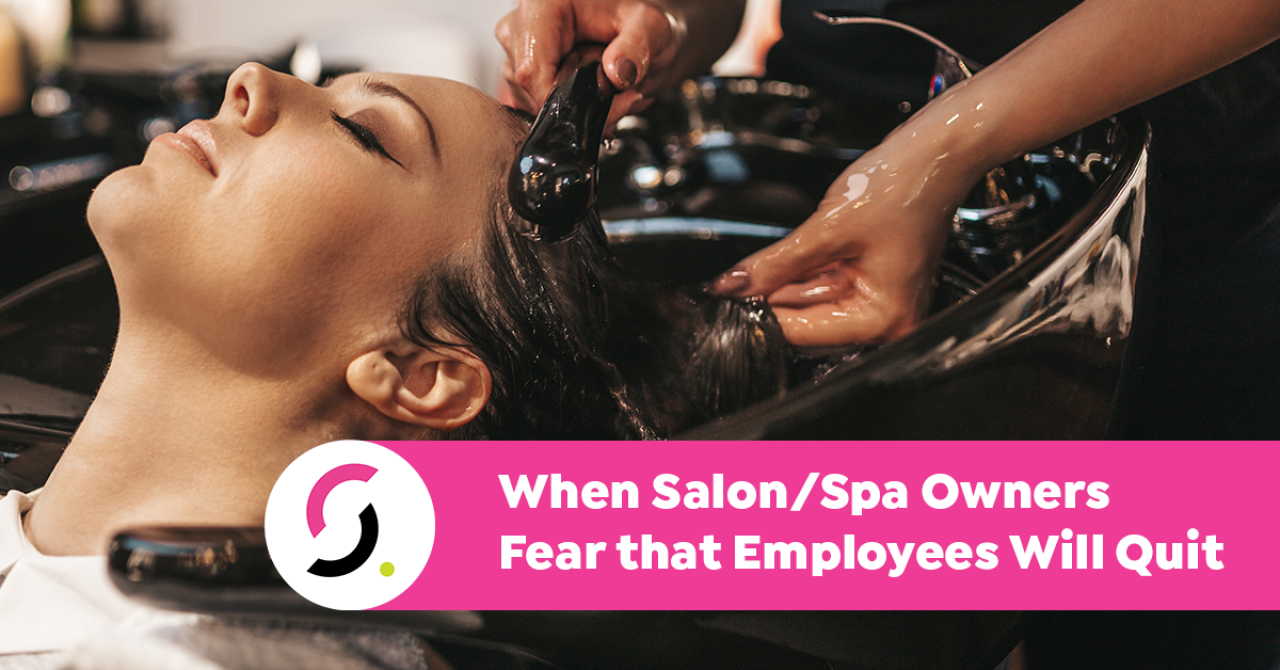When Salon/Spa Owners Fear that Employees Will Quit

As a salon/spa owner, you know that change, sometimes even minor change, rocks the boat.
You also know that, in business, change is inevitable.
Some owners are great at communicating and implementing change. They share the “why, what, when and how” of what is going to happen. They lead their teams to a better place.
There are owners that turn change initiatives into wrecking balls with poor communication and half-baked plans.
Lastly, there are many owners that fear how their employees will react to change. The biggest fear is that busy employees will quit and take “their” clients with them.
When the level of fear becomes greater than the need for change, owners and their salons/spas are officially stuck. A stuck business can only coast for so long before it declines.
Here are six No-Compromise Leadership strategies to overcome the fear that employees will quit and to implement the changes your salon/spa needs to survive and thrive:
- You already waited too long: Fear is like quicksand. It pulls you down and fills your mind with ugly worst-case scenarios. Fear fuels procrastination. The damage from financial, operational and cultural problems add up quickly to create levels of business stress that can be debilitating. You know something needs to change, but the fear of what will happen if employees leave is just as bad. KEY: In coaching, we see owners in these stressful predicaments all the time. In almost every case, the problems were festering longer than necessary. In almost every case, the longer the festering goes on, the more disgruntled employees become, and the more enticing other employment and independent opportunities appear. The only way to keep from getting stuck is to take action sooner than later.
- Addressing symptoms and not the problem: You have one or more employees with dismal to lackluster retail sales. You implement a minimum 10% retail to service sales quota to receive retail commission. Nothing changes because they weren’t selling retail before the quota. You have one or two employees that keep breaking rules. You call an all-staff meeting. Everyone has to listen to the problems that should have been discussed one-on-one with the rule violators. The rule violators keep violating rules. Cash flow is tight and profit is slim to none. You put in a product charge that infuriates most employees. The real problem is your service payroll is too high because your commission rates are too high. You need a new and better compensation system. KEY: You can address symptoms of problems with quick-fixes and band-aids all you want. But the problem will not go away until it is addressed head on with a solid and complete solution. If it means the loss of one or more employees in the process, so be it. If it needs to be done — get it done.
- What you fear most will happen if fear wins: It doesn’t take long for employees to see or sense that problems need to be addressed or that something isn’t right in the company. Most often, employees are waiting for the owner or leader to fix the problem. When the problem persists, employees get frustrated with the owner/leader for not taking action. Financial problems can be hidden for a bit. Eventually, employees see cash-flow problems surface when supplies run low, shelves become bare, education stops and more. KEY: Start rating problems on a scale of one to five, with five being severe. A level two problem is relatively easy to identify and fix before it escalates. When a problem hits level three, it requires your full engagement and a complete fix. If it goes to level four, your fix didn’t work as planned, or you waited too long. You need a more comprehensive solution to prevent it from escalating to a level five. Level five is crisis mode. Level five solutions are the hardest to implement because the problem grew too complex. Work through your fear sooner than later.
- If you “checked out” — check back in: Owners have a tendency to “check out” when they function in the comfort zone for too long. Another reason is when owners become overwhelmed by the stress and problems of business ownership. KEY: There is NO autopilot or set it and forget it approach to leading a salon/spa business. Service businesses are labor intensive. Your product and brand recognition are the services and experiences created by your employees. Systems and procedures create structure and predictability. Skill training ensures consistency. Financial oversight and cash-flow management ensures financial sustainability. If you checked out, snap out of it and check back in. Want help getting excited about your business again? We can help. Schedule a free strategy session here.
- Best business practices dramatically improve employee retention: If you want toxic and dysfunctional salon/spa business, run it like a country club. Allow people to come and go as they please. Don’t worry about service time standards and all those critical numbers. KEY: Such a free-spirited work environment may sound like a paradise to attract and retain great employees — but it’s exactly the opposite. It can’t create the type of employee growth or career opportunities capable of retaining great and talented employees. Best business practices exist for a reason. Any salon or spa that commits 100% to best business practices will be the market leader. And they won’t have a challenge retaining and recruiting talent.
- Get the right help: Owning, leading and growing a successful salon/spa business means building a highly functioning, efficient and recognizable brand. KEY: It takes work, dedication and know-how. It takes an owner that fully engages in his or her role as leader by making timely and decisive decisions to assure continued growth. There is no time to play the game of trial and error. The best salon/spas are coached in implementing and maintaining best business practices.
Here’s my challenge to you: If what you just read makes you squirm a bit, it was meant to do just that.
The fear of implementing change because you fear that employees will quit is real.
But to avoid making change is a disservice to your employees and your investment of time and money in your business.
Maybe your employees will rally around you. Maybe it’s time for one or more toxic employees to move on.
Lead above your fear. That’s what No-Compromise Leaders do.


Comments
No comments found. Start the conversation!
Leave a Comment